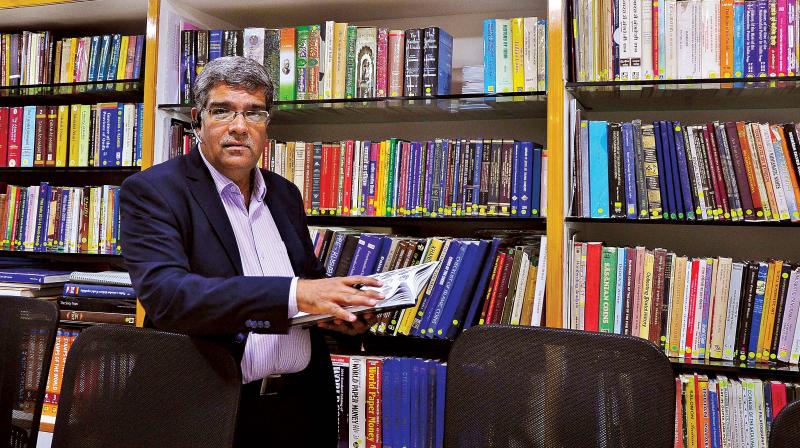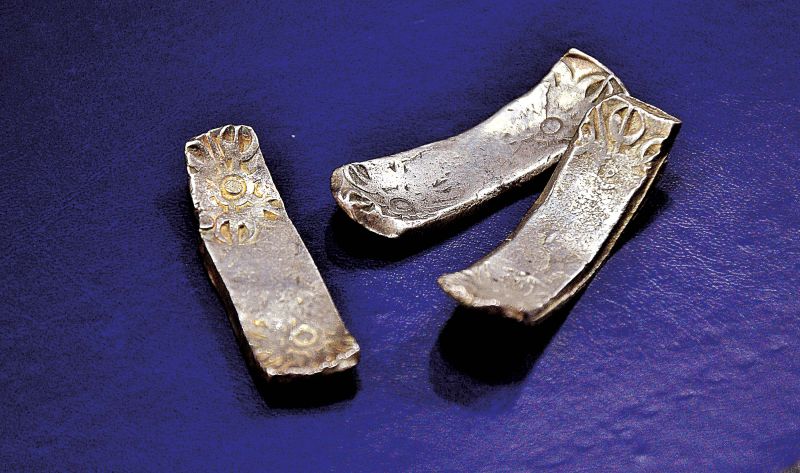Urban Legend: A legacy of coins to discover history anew

Numismatics, or the study of coins, seems a fairly bookish hobby. To the dedicated numismatic, however, a single coin can open up a whole new world. Rajender Maru, who comes from a family of numismatists, talks to Darshana Ramdev about a collection that dates back over 2,500 years.
Marudhar Arts is nestled away in a basement on M.G. Road, visible mainly only to those in pursuit of it. The noise from the street is overwhelming at first, but only until Rajender Maru, the renowned numismatist, sends a fistful of coins clattering onto the glass counter. A crudely-hammered, crescent-shaped lump of metal, appears unimpressive until Maru points out that it is 2,600 years old. "This was minted in Afghanistan, back when the Indian subcontinent included Afghanistan, Burma and Bangladesh," he explained. A round, flat silver coin dates back to 1701, property of King William III.
Even the least-enthusiastic observer will give in to a moment of total fascination, a history buff will find great joy. Maru, on the other hand, rattles off dates, the names of dynasties and their rulers and recalls mints without batting an eyelid. For him, a single coin can open the door to a whole, new world. "Serious collectors tend to spend their nights poring over catalogues, the rest of the world forgotten," Maru remarked. "Once you understand their language, there is so much to discover. Coins are the most authentic proof of our history."
 Gandharva Janapada, a 2,600-year-old silver coin minted in the region that is now Afghanistan (Photo: Satish B.)
Gandharva Janapada, a 2,600-year-old silver coin minted in the region that is now Afghanistan (Photo: Satish B.)
Maru leads the way into a conference room, a seemingly ordinary space save for the books that line an entire wall. "This is my library," he announced, in a moment of great pride. "It's open to everybody." This little library (the books here are only a fraction of his collection, most of which he leaves back home in Bikaner), is the envy of every numismatist - the worth of the rarer editions runs into several lakhs. "I have numismatists and history buffs in here almost everyday. This space belongs to them," he said.
His son darts in and out, catalogues in hand, pausing occasionally beside his father for clarification on a coin. "I come from a family of collectors," Maru pointed out. His wife, Amita, who first kindled Maru's love for numismatics, collected stamps all her life, much like her father-in-law, with whom it all began. "My grandfather was in the army and was deputed to fight in World War Two," said Maru. "He took a bullet, unfortunately and was sent back to the Bikaner regiment, where they appointed him as a peon."
Maru's father was seven-years-old at the time and the unforgiving Bikaner heat didn't leave a child with too many entertainment options. "He went to the post-office," Maru smiled with amusement. There, he was fascinated by the envelopes that had been thrown away, still bearing their stamps. "My grandfather didn't approve of this hobby, so my father would roll the stamps into his sleeves and then hide them away at home."
That marked the start of the family's journey into antiques of all kinds, driven by a love for coins and stamps. How are they valued? "Take Aurangzeb, for instance," Maru responds with an anecdote. "Gold coins were minted in Delhi, Ahmedabad and Surat. They're well-stocked, well-hammered and large. They won't be worth more than Rs 2000 a piece. If you find the same coin with the Machilipatnam printed on it, the price will soar into the range of a couple of lakhs." The word, he said, proves that Aurangzeb had travelled across the country to strike a deal.
The coins are studied in painstaking detail. Those minted before roughly BC 100 are marked by coats of arms and family seals. "As they entered the modern age, rulers began using their own faces, wrote their names and that of the mint and used deities as well," Maru explained. "A single coin can tell you the name of the ruler, what kind of person he was, the fashion of the time and the religious motifs."
Maru's point of reference is the South Asian Coins and Paper Money, Indian Edition, Akbar to date, a large, hard-bound book. "I edited this version," he remarked later. "30 years ago, my father asked a dealer if he could take a look at this book. because he couldn't afford to buy it. He was turned away. I took that badly." Thirty years later, he was called upon to edit it. "I didn't sleep for a year," Maru said. "My fingers were swollen and so painful they had to be bandaged. It's worth it, though. To a serious collector, it’s never too difficult!"

